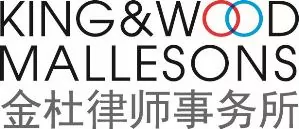Only 10 days after its conditional clearance of the Alpha V/Savio deal1, the Ministry of Commerce (MOFCOM) published, on 10 November 2011, the third conditional merger clearance of this year approving the proposed joint venture between General Electric (China) Ltd. (GE China) and China Shenhua Coal to Liquid and Chemical Co., Ltd. (CSCLC)2.
This is the first conditional decision relating to a Chinese Stated-owned enterprise (SOE) and the number of MOFCOM's conditional clearance decisions is lifted to nine in total. According to MOFCOM's announcement, the review process lasted for about 7 months starting from April 13 when the notification was first submitted to MOFCOM.
Parties and Transaction. The proposed transaction was announced as early as January, 2011 as part of President Hu Jintao's state visit to the United States3. GE China and CSCLC are to establish a 50/50 JV mainly to license coal-water slurry (CWS) gasification technology to industrial and power projects in China. GE Infrastructure Technology, another subsidiary of GE will license GE's CWS gasification technology to the proposed JV.
The parent company of CSCLC - Shenhua Group Corporation Limited (Shenhua Group) is a State-owned mining and energy company in China. Its core businesses include production and supply of coal, electricity and heat, as well as rail and port transportation services.
Relevant Market. MOFCOM paid close attention to the market in which the proposed JV will be active, and found that this transaction might exclude or restrict competition in the CWS gasification technology licensing market. Considering the significant differences between CWS gasification technology and other coal gasification technologies, MOFCOM was of the view that CWS gasification technology licensing market constitutes a separate relevant product market.
Since the propose JV will only be active in China and the Chinese licensees only acquire such technology on the China market, MOFCOM found that the relevant geographic market is China.
Competitive Assessment. Apparently, market share, market concentration level and market entry are still the major factors MOFCOM considered in its competitive assessment process.
MOFCOM indentified that China's CSW gasification technology licensing market is highly concentrated with only three major players – CWS gasification technology provided by GE Infrastructure Technology, multi-nozzle-mounted CWS gasification technology jointly developed by Yankuang Group and East China University of Science and Technology, and multi-component slurry gasification technology provided by the Northwest Research Institute of Chemical Industry. It was noted by MOFCOM that GE's CWS gasification technology has the highest share in this market.
MOFCOM further looked into an adjacent market involved in this transaction. Since CWS gasification technology has specific requirements for the properties of the raw coal, operators of CWS gasification projects need to have a reliable supply of the specific coal. MOFCOM noted that in 2010, Shenhua Group was the largest supplier of raw coal that is suitable for CWS gasification projects.
MOFCOM also found that there are significant barriers for entry into the CWS gasification technology market due to the complexity of the technology, high investment cost, existing IP rights and long R&D and industrialization cycles.
In light of the above, MOFCOM concluded that the proposed JV is likely to restrict competition in the CWS gasification technology market by making use of the dominant position of Shenhua Group in the raw coal market.
Remedies. In order to solve the competition concerns, MOFCOM requested CSCLC and Shenhua Group not to compel licensees of CWS gasification technology to use JV's technology by restraining the supply of raw coal, or by conditioning such supply on licensing of JV's technology, nor to raise the cost of such supply for those using other technologies.
Comments
There are a few points about this decision that are worth mentioning. As mentioned above, it is the first conditional merger control decision where an SOE is involved. If read together with the recent antitrust probe of China Telecom and China Unicom by the National Development and Reform Commission4, it appears that contrary to protectionism accusations from overseas, Chinese antitrust enforcement agencies are indeed increasing their antitrust scrutiny of SOEs.
It is also the first conditional clearance of a joint venture project. Whether JV is caught by China's merger control regime is not expressly stipulated in the AML. However, based on our experiences, MOFCOM considers joint ventures to be a type of notifiable transactions under the AML. This decision officially affirmed MOFCOM's position in this regard.
Furthermore, this is the first time MOFCOM defined a technology licensing market. This decision (as well as the previous decision on Alpha V/Savio deal) has become more detailed in terms of competitive analysis. It is also interesting to note that MOFCOM imposed behavioral remedies in this case after it requested divestiture in the Alpha V/Savio case. All these suggest that MOFCOM is getting increasingly sophisticated and holds a flexible and pragmatic approach towards merger remedies.
Footnotes
1 See our article entitled
MOFCOM's 8th Conditional Clearance - Alpha V/Savio
Deal.
2 A copy of MOFCOM's Announcement [2011] No. 74
could be found here (in Chinese):
http://fldj.mofcom.gov.cn/aarticle/zcfb/201111/20111107824342.html.
3 See the press release of the deal on GE's
website:
http://www.genewscenter.com/Press-Releases/GE-and-Shenhua-Announce-Formation-of-Cleaner-Coal-Technology-Joint-Venture-in-China-2ddd.aspx.
4See our article entitled
Earlier Rumor Confirmed: China Telecom and China Unicom under
Antitrust Investigation on details of this
incident.
The content of this article is intended to provide a general guide to the subject matter. Specialist advice should be sought about your specific circumstances.


